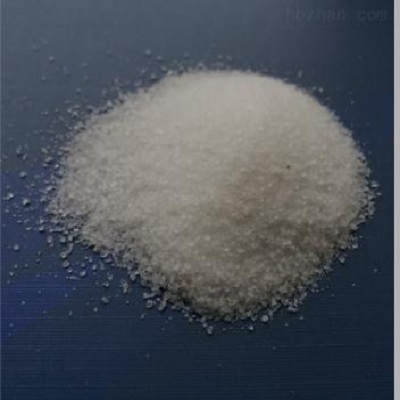Basic concepts related to coagulation promotion
Coagulation: The blood is drawn from the blood vessel. If it is not anticoagulated and no other treatment is done, it will coagulate automatically in a few minutes. The light yellow liquid separated from the upper layer after a certain period of time is serum. The difference between plasma and serum is that there is no FIB in serum
Anticoagulation: use physical or chemical methods to remove or inhibit certain coagulation factors in the blood and prevent blood coagulation, which is called anticoagulation. The upper layer of pale yellow liquid after centrifugation is plasma.
Anticoagulant: a chemical agent or substance that can prevent blood clotting, called an anticoagulant or anticoagulant substance.
Coagulation promotion: The process of helping blood clot rapidly.
Coagulant accelerator: a substance that helps blood coagulate rapidly so as to precipitate serum rapidly. It is generally composed of colloidal substances

Anticoagulant principle and application of common anticoagulants
1. Heparin is the preferred anticoagulant for the detection of blood chemical composition. Heparin is a mucopolysaccharide containing sulfate group, and the average molecular weight of the dispersed phase is 15000. Its anticoagulation principle is mainly to combine with antithrombin III to cause changes in the configuration of antithrombin III and accelerate the formation of thrombin thrombin complex to produce anticoagulation. In addition, heparin can inhibit thrombin with the help of plasma cofactor (heparin cofactor II). Common heparin anticoagulants are sodium, potassium, lithium and ammonium salts of heparin, among which lithium heparin is the best, but its price is expensive. Sodium and potassium salts will increase the content of sodium and potassium in the blood, and ammonium salts will increase the content of urea nitrogen. The dosage of heparin for anticoagulation is usually 10. 0 ~ 12.5 IU/ml blood. Heparin has less interference with blood components, does not affect the volume of red blood cells, and does not cause hemolysis. It is suitable for cell permeability test, blood gas, plasma permeability, hematocrit and general biochemical determination. However, heparin has antithrombin effect and is not suitable for blood coagulation test. In addition, excessive heparin can cause leukocyte aggregation and thrombocytopenia, so it is not suitable for leukocyte classification and platelet counting, nor for hemostasis test In addition, heparin anticoagulation cannot be used to make blood smears, because the dark blue background appears after Wright staining, which affects the reduction of microscopic production. Heparin anticoagulation should be used for a short time, otherwise the blood can coagulate after being placed for too long
2. EDTA salt. EDTA can combine with Ca2+in the blood to form a chelate. The coagulation process is blocked and the blood cannot coagulate EDTA salts include potassium, sodium and lithium salts. The International Hematology Standardization Committee recommends the use of EDTA-K2, which has the highest solubility and the fastest anticoagulation speed. EDTA salt is usually prepared into an aqueous solution with a mass fraction of 15%. Add 1.2mgEDTA per ml of blood, that is, add 0.04ml of 15% EDTA solution per 5ml of blood. EDTA salt can be dried at 100 ℃, and its anticoagulation effect remains unchanged EDTA salt does not affect the white blood cell count and size, has the least effect on the morphology of red blood cells, inhibits platelet aggregation, and is suitable for general hematological detection. If the concentration of anticoagulant is too high, the osmotic pressure will rise, which will cause cell shrinkage The pH of EDTA solution has a great relationship with salts, and low pH can cause cell expansion. EDTA-K2 can slightly expand the volume of red blood cells, and the average platelet volume in a short time after blood collection is very unstable and tends to be stable after half an hour. EDTA-K2 decreased Ca2+, Mg2+, creatine kinase and alkaline phosphatase. The optimal concentration of EDTA-K2 was 1. 5mg/ml blood. If there is little blood, neutrophils will swell, lobulate and disappear, platelets will swell and disintegrate, producing fragments of normal platelets, which will lead to errors in the analysis results EDTA salts can inhibit or interfere with the polymerization of fibrin monomers during the formation of fibrin clots, which is not suitable for the detection of blood coagulation and platelet function, nor for the determination of calcium, potassium, sodium and nitrogenous substances. In addition, EDTA can affect the activity of some enzymes and inhibit lupus erythematosus factor, so it is not suitable for making histochemical staining and examining blood smear of lupus erythematosus cells.
3. Citrate is mainly sodium citrate. Its anticoagulation principle is that it can combine with Ca2+in the blood to form a chelate, so that Ca2+loses its coagulation function and the coagulation process is blocked, thus preventing blood coagulation. Sodium citrate has two kinds of crystals, Na3C6H5O7 · 2H2O and 2Na3C6H5O7 · 11H2O, usually 3.8% or 3 with the former. 2% aqueous solution, mixed with blood in 1:9 volume. Most coagulation tests can be anticoagulated with sodium citrate, which is helpful to the stability of factor V and factor VIII, and has little impact on the average platelet volume and other coagulation factors, so it can be used for platelet function analysis. Sodium citrate has less cytotoxicity and is also one of the components of blood maintenance fluid in blood transfusion. However, sodium citrate 6mg can anticoagulate 1ml blood, which is strongly alkaline, and is not suitable for blood analysis and biochemical tests.
Post time: Sep-12-2022





